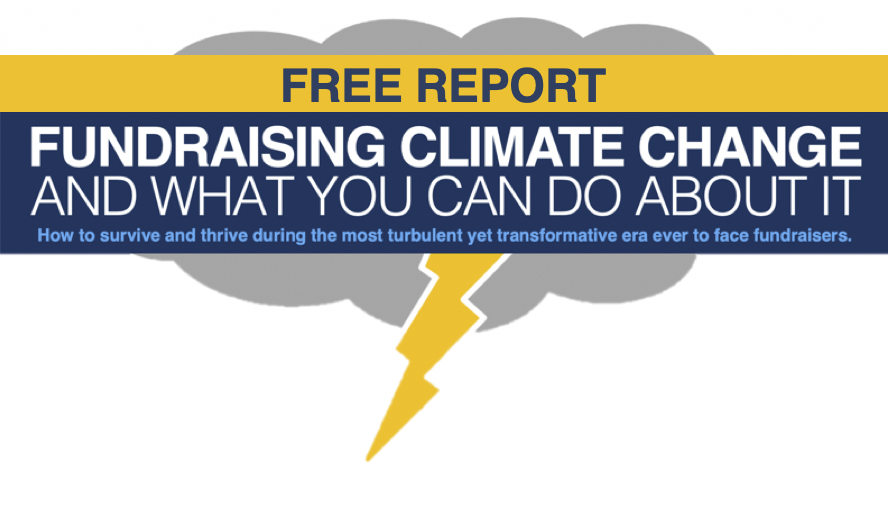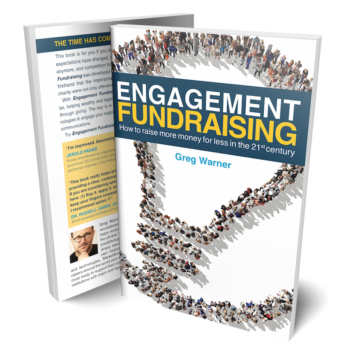We use cookies to ensure that we give you the best experience on our website. By continuing to use this site, you agree to our use of cookies in accordance with our Privacy Policy.
 Login
Login
Your Role
Challenges You Face
results
Learn
Resources
Company
Why major and legacy donors think your fundraising communications stink!


First, it is not all your fault.
Well then, can we blame it on leadership?
Leadership should share the burden of blame because fundraisers tend to feel a lot of pressure to do what’s always been done. In many cases they are driven (by leadership) to avoid trying anything new in case it doesn’t work. If that happens they fear the attempt might be considered a waste of donor money. Although, I believe that not trying something new is what really should be considered objectionable.
But maybe it isn’t their fault either?
Leadership tends to do what the board wants and both the board and an organization’s leadership are afraid of the media. Yep! Unfortunately, the media are always anxious to prove that nonprofits are mishandling donations. Most reporters don’t understand the business of fundraising. They tend to believe that no money (or very little) should be spent on the raising of funds.
Sure, it’s unrealistic and unfair. However, if you don’t abide by their dictates, they might make an example out of you.
How ’bout we blame it on your vendors then?
Too often fundraisers rely heavily on the vendors servicing their accounts— just as their predecessors did. Many wrongly believe that’s a safe bet — the path of least resistance — since those vendors often had been involved long before the current staff were hired. Therefore, they tend to have a fair amount of valuable institutional knowledge.
But, unfortunately, those vendors might also be direct response companies motivated by volume. Therefore, the more ‘stuff’ they send out to your current and prospective supporters, the more they get paid. Sadly, this results in more populist fundraising or spray-and-pray communications that seemingly seek to pound donors into submission (until they give or give again, and give more).
In my experience, very few of these vendors recognize that the goal of acquisition fundraising should be to begin trustworthy relationships with supporters so they become more likely to evolve into partnerships that result in major and legacy gifts. Instead, most take a short-sighted approach. They try to get supporters to make mostly small donations once, monthly or yearly. And, in many cases, it’s the leaders of the organizations who are forcing them to focus on immediate results among low-dollar, impulse-oriented donors.
That shouldn’t be the case! Leaders of organizations shouldn’t seek those outcomes. Instead, they should ask their direct response vendors to aim for long-term results. For instance, they should demand that they aim to find needles in haystacks— supporters who are qualified and likely to make major gifts now and impactful legacy gifts later. And, they should be evaluated on the retention rates of the donors they acquire along with the lifetime values of their gifts, not on how much money they bring in each month or year.
However, too many leaders fear doing anything differently (see above). So the circle continues.
Ok… finally, how to stink less (and be the fundraiser you always wanted to be).
Acquisition fundraising should never be solely about the money. Retention fundraising shouldn’t be either. All of it should be designed to ‘land and expand’. At least that’s what we call it in the tech/software business.
According to Saasx (an online entrepreneur community), land and expand “refers to a strategy to land a customer with a small deal, and then sell into the organization to expand your footprint to more seats, additional departments or more products & services.”
MarketSmart often employs a land and expand strategy. Many times we’ll first sell a donor survey effort to a new customer. Then, once they feel they can trust us because they know we deliver value (results) in line with their needs, we help them navigate the decision-making process in a way that usually leads to a much larger, long-term contract and referrals too.
Land and expand is not a transactional model.
It ain’t about the money! Especially not during the first engagement. Rather, it’s about building the relationship upon a foundation of trust and mutual benefit.
Similarly, when it comes to fundraising, the best, wealthiest, most philanthropic potential donors (the very people you are hoping to ‘acquire’ and ‘retain’) are not looking to give transactionally. Nor are they seeking trivial relationships.
No! These well-meaning people are desperately seeking to find meaning in their lives. They want to live on in the hearts and minds of others for all time. And, they are trying to make impact so they can feel good about themselves.
To them, this is no game and it certainly is not just about making transactions here or there. These philanthropic-minded people are looking for a trusted partner in their journey as they navigate the charitable giving landscape. They desperately want to ‘land and expand’; I promise, they really do!
But too often they only get to land and their attempts to expand are met with crass solicitations that provide very little value for them. Additionally, their desire for a sincere, long-lasting relationship (a partnership) is not fostered. Instead it’s thwarted.
After all, would you find value in a friend who asks for money every time you see her? Wouldn’t you rather have a fair and respectful, mutually beneficial ‘give and take’ relationship?
And so their journey continues.
These amazing people — your well-meaning donors — hop away looking for a relationship with another organization, hoping they’ll find a partner with whom they can realize the best version of themselves, and feel good.
They continue their search until finally, for many, they quit altogether.
Yes, it’s true. You can see the data here. Donors are fed up, so they’re giving up on giving. The number of people giving to charity as a whole has been declining at a rate of 3 to 5 percent each year. Scary isn’t it?
The losers in this self-perpetuating game include the donors, along with the beneficiaries of their gifts, your organization, and eventually you— the fundraiser.
So, in case you missed it, this is the reason why high-capacity donors think your fundraising stinks.
They want to give. Of course they do! It’s part of their humanity.
But too often they feel mistreated. So they become fed up.
It’s pretty simple, really. If they aren’t getting the value they feel they deserve from you and your organization, they just go looking elsewhere for a fundraiser and organization that treats them better. An organization that takes them out of the endless cycle of transaction-oriented pitches and solicitations. An organization they can trust. An organization that gives to them to make sure they feel good.
You can break the cycle.
You can be the one who will find ways to give to your donors first and often.
You can be the one to leverage technologies to help you get the job done. You can be the one who will support their decision-making process with value-oriented cultivation and stewardship that is otherwise very time-consuming and tedious to create and distribute. You can be the one who realizes that the law of reciprocity is powerful and should never be underestimated.
You should be the one who gives!
And, gives again!
Then, you’ll be the one who gives even more to your supporters!
And, you’ll be the one who finds ways to give value in alignment with each donor’s wants, needs and interests.
Plus, you’ll be the one who gives in ways that align with the stage of the consideration process in which each donor resides.
Only then, after you give, will you receive amazing, impactful gifts that will ensure your organization’s survival for generations to come.
I promise, giving will work and your major and legacy donor prospects will no longer think that your fundraising stinks.
Want to learn more about why your fundraising efforts aren’t working as well as you hoped? Go here to find out about Fundraising Climate Change.
Get smarter with the SmartIdeas blog
Subscribe to our blog today and get actionable fundraising ideas delivered straight to your inbox!


Thank you! This is SO true. Thanks for sharing. Relationship building is the most important part and the gifts on an ongoing basis is the result.
Yes indeed. Thanks for reading and adding your comment Carolyn.